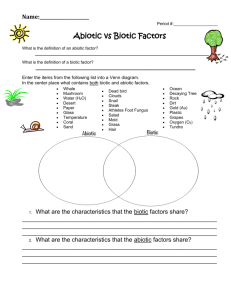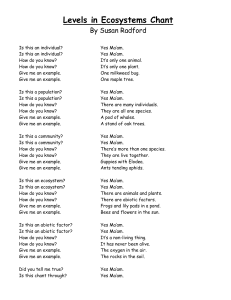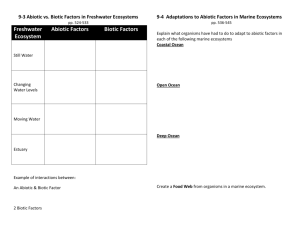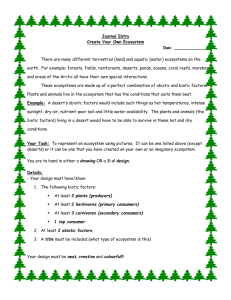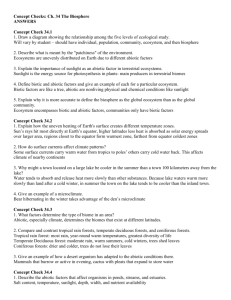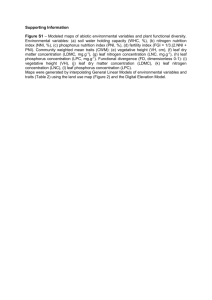Interactions
advertisement
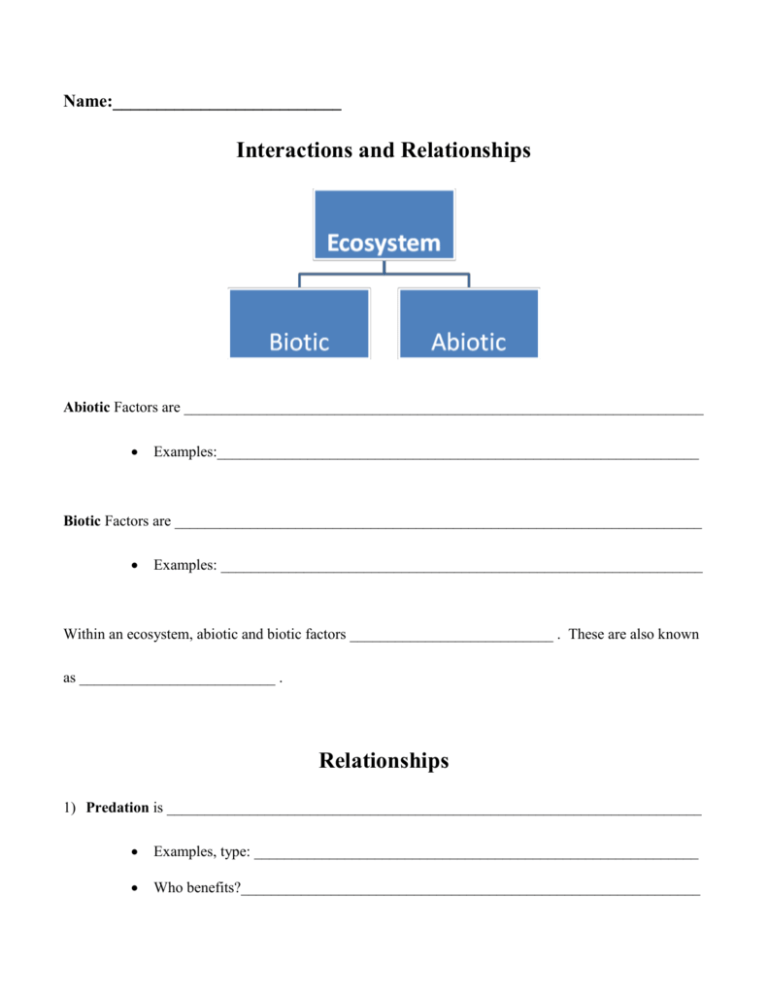
Name:__________________________ Interactions and Relationships Abiotic Factors are _____________________________________________________________________ Examples:________________________________________________________________ Biotic Factors are ______________________________________________________________________ Examples: ________________________________________________________________ Within an ecosystem, abiotic and biotic factors ___________________________ . These are also known as __________________________ . Relationships 1) Predation is _______________________________________________________________________ Examples, type: ___________________________________________________________ Who benefits?_____________________________________________________________ 2) Competition is _____________________________________________________________________ Examples, type: ___________________________________________________________ Who benefits?_____________________________________________________________ 3) Symbiotic Relationships are __________________________________________________________ Mutualism is ________________________________________________________________ o Examples, type: ________________________________________________________ o Who benefits?__________________________________________________________ Commensalism is ____________________________________________________________ o Examples, type: ________________________________________________________ o Who benefits?__________________________________________________________ Neutralism is ________________________________________________________________ o Examples, type: ________________________________________________________ o Who benefits? __________________________________________________________ Parasitism is ________________________________________________________________ o Examples, type: ________________________________________________________ o Who benefits? __________________________________________________________ Interactions! Name: _________________________________ Group Members: _________________________ ___________________________ Instructions: 1. Choose an ecosystem (savannah, desert, tropical rain forest, coral reef, bottomland hardwood forest, etc.) to study. 2. Make a list of the abiotic elements in your ecosystem. 3. Make a list of the biotic elements (herbivores, carnivores, omnivores) in your ecosystem. 4. You must have at least 3 abiotic elements, 3 plants, 4 herbivores, 4 omnivores and 4 carnivores in your ecosystem. 5. Design an interactions web. Draw lines between the elements to show there is interaction between the two elements. Use arrows to show which is the consumer. 6. Write the type of interaction that is occurring on each line. to use each type of interaction that was discussed today. 7. Switch webs with 1 other group. Make corrections or additions to their web. 8. Answer the questions on the other side of this sheet. Be sure Abiotic: _________________________________________________________________ Biotic: _________________________________________________________________ -Adapted from http://www.lpb.org/education/classroom/itv/envirotacklebox/teacherguide/module5/5popln2.htm Questions Answer the following questions in full sentences and in the space provided. You may use the back of the sheet if you need more space. 1. Do plants and animals depend on their interactions with the abiotic factors in their environment? Why or why not? __________________________________________________________________________________ __________________________________________________________________________________ __________________________________________________________________________________ __________________________________________________________________________________ 2. How might humans affect these interactions? Give examples. ________________________________ __________________________________________________________________________________ __________________________________________________________________________________ __________________________________________________________________________________ 3. Describe the changes in relationships that might occur if one of the producers disappeared. Consumer? What effects might this have on population sizes? __________________________________________________________________________________ __________________________________________________________________________________ __________________________________________________________________________________ __________________________________________________________________________________ -Adapted from http://www.lpb.org/education/classroom/itv/envirotacklebox/teacherguide/module5/5popln2.htm


